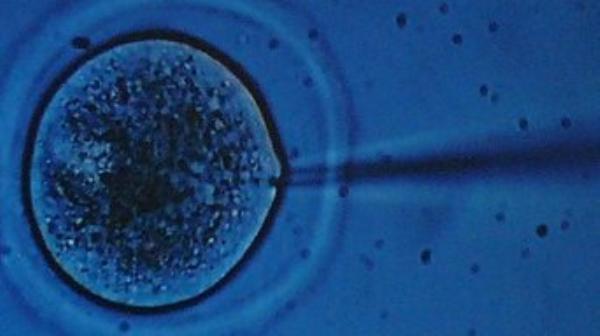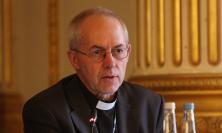Expected to have its Second Reading in the House of Commons in May, the Human Fertilisation and Embryology Bill has already been the focus of controversy, with media attention given to the interventions of Church leaders and the call for the government to allow a free vote. But what does the Bill actually propose? Agneta Sutton examines some of the most contentious measures and the ethical issues they raise.
The Human Fertilisation and Embryology Bill, currently on its way through Parliament, contains a number of controversial proposals. Four of them in particular will be the subject of heated debate: the proposal to legalise the creation of human-animal embryos for research; the proposal to allow lesbian couples to have IVF and be registered as parents of the child; the proposal to give legal sanction to the creation of so-called saviour siblings; and the proposal to allow the use of a technique similar to that of cloning to avoid mother-to-child transmission of mitochondrial disease. There is also a debate about whether the time-limit for abortion ought to be lowered.
The Government-sponsored Bill was whipped through the House of Lords, but in the face of mounting opposition from senior Cabinet ministers, and after eminent academics added their voices to those of Catholic and other Bishops calling for a free vote on the Bill in House of Commons, the Prime Minister, Gordon Brown, eventually gave in and announced that Labour MPs would be allowed a conscience vote on the most controversial measures, such as the creation of human-animal hybrids, fatherless IVF children and the time-limit for abortion. Whatever amendments are made or not made to the Bill at that stage, however, Labour MPs will still be expected to vote in favour of the final form of the Bill. This is less contentious than the earlier obligation not to vote against the Bill at any stage because, if the more controversial proposals are not refuted in the initial debates, they will be passed irrespective of any opposition.
Much of the media have sought to depict the debate on the Bill as one between religion and science, but this is only partly true. For example, Frank Furedi, a member of the British Humanist Association, and known for his liberal views, is among the signatories of an open letter to the Times in which it was argued that all MPs should be given permission to vote according to their conscience. Also among the over 100 prominent academics who put their names to the letter are two members of the Human Genetics Commission. Indeed, the debate concerning the free vote has been as much about respecting personal conscience as one of science versus religion. If MPs could be given a free vote on fox-hunting and the docking of dogs’ tails, it would be remarkable if they were not granted a free vote on issues as sensitive as the creation of embryos that are part animal and part human, the permitting of which is undoubtedly the most controversial proposal contained in the HFE Bill.
Animal-human embryos
Calls for the creation of inter-species embryos have been prompted by a shortage of human eggs required for the cloning of fully human embryos for the purpose of embryonic stem-cell research. Despite the provision of financial incentives to donate eggs in connection with IVF, it has been impossible for scientists to obtain a sufficient number of human eggs for this kind of research, which is said to be necessary in order to know more about and find cures for Alzheimer’s and Parkinson’s disease and many other conditions.
Hence, what is being proposed is the use of rabbit or cow eggs to create embryos whose genetic make-up would be 99.9 % human. Using the cloning technique, the cell nucleus of a rabbit or cow egg would be removed and the cell nucleus of a somatic human cell, such as a skin cell, would be inserted instead. The new entity, called a cytoplasmic hybrid, or for short a cybrid, would house human chromosomes in its cell nucleus as well as a few animal genes in the cytoplasm left in the animal egg. If the technique were perfected, cybrid embryos would be allowed to develop for a few days, after which their stem cells would be removed for research. As these entities would be nearly fully human, it is thought that they would prove useful for research into human diseases.
An experiment using a similar technique has already been undertaken by a Newcastle team headed by Dr Lyle Armstrong. Thus this team recently announced that they had created human-animal cytoplasmic hybrids by placing human embryonic stem cells in cow eggs that had been emptied of their own cell nuclei. The team’s justification for going ahead with the experiment was that the HFEA granted them a licence to do so last January following an extensive public consultation. Given the widespread public concern about this type of research, however, the team’s decision to undertake this kind of work ahead of Parliamentary approval seems quite brazen.
That said, present legislation permits the creation of ‘true’ animal-human hybrids. A true human-animal hybrid is a hybrid created by fertilising a human egg with an animal sperm or by fertilising an animal egg with human sperm. Under the HFE Act 1990 it is permitted to fertilise a hamster egg with human sperm and allow the resulting entity to develop into a two-cell embryo in order to test male fertility. However, because of the development of ICSI (intracytoplasmic sperm injection) the test is now obsolete, and it may be pointed out that many countries – among them Belgium, Canada, France, Germany and the Netherlands – explicitly prohibit the creation of true human-animal hybrids.
It should also be pointed out that scientists have been able to reprogramme adult cells and turn them into embryonic-like cells. This technique by-passes the need for creation of embryos and is therefore considered to be less controversial. Developed by two independent teams, one Japanese and one American, the technique involves rewinding the biological clock of adult human skin cells and turning them into pluri-potent stem cells, which are referred to as iPS cells (which stands for induced pluripotent stem cells).
Many scientists argue that embryonic stem cell research is neither necessary nor as promising as adult stem cell research. Much progress, they would say, has been made in the area of adult stem-cell research, and adult stem-cell therapies are already proving clinically valuable, whereas embryonic stem-cell research has yielded no clinically useful results.
Children without fathers
Scarcely less controversial is the proposal to delete the clause in the 1990 HFE Act concerning the child’s need for a father, and so allow a lesbian couple to be registered as the parents of a child created by IVF. The idea here is to promote the view that the parenthood of a lesbian couple is on a par with that of a man-woman couple.
Of course, many people may agree that a child would be better off being reared by a loving lesbian couple than by a dysfunctional heterosexual couple. But this does not mean that they would consider growing up within a family headed by a loving lesbian couple to be equally as healthy for a child as growing up in a family headed by a loving heterosexual couple. Even if two women may in many respects complement one another—as they undoubtedly might—it does not follow that the complementarity of two women is on a par with that between a man and a woman. It is widely recognised that children benefit from having both a father-figure and a mother-figure as they grow up. Saying this is not to deny that there are many successful single-parent families – including widows, widowers and other single mothers and fathers who make wonderful parents and raise their children well – but in very few of these cases do people set out with the intention of being single parents. In the case of IVF services, the removal of the clause about the child’s need for a father would allow society actively to cooperate in the creation of fatherless children. This is very different from being deprived of a father by accident or because things did not work out within a man-woman relationship.
In April 2005, after much debate and lobbying, sperm and egg donor anonymity ceased in the UK on the grounds that the child has a right to know the identity of its genetic parents. On reaching the age of 18, the child now has a right to know its genetic origins. This was a recognition of the rights of the child and the injustice of not allowing the individual information about his or her genetic origin. This raises the question whether it is a lesser injustice to deliberately deprive a child of a father.
Saviour siblings
Another practice that has already been endorsed by the HFEA is the creation of so-called saviour siblings, although it has not yet been sanctioned by Parliament. The creation of a saviour sibling involves the selection of an IVF embryo that could serve as tissue donor for a sick sibling. The test used – the Human Leukocyte Antigen test – serves to determine whether the embryo’s antigens (the molecular markers on its cells that flag them up as the embryo’s own and distinguish them from foreign cells) are compatible with those of the sick sibling.
The procedure is controversial inasmuch as the reason for the child’s creation is its service as a tissue donor for its sick sibling, which may place it in an invidious position. Whilst the kind of donor tissue the parents and doctors would normally have in mind is umbilical cord blood, and the use of the child’s umbilical cord blood would in no way harm or hurt the child, if treatment with umbilical cord blood should fail, the saviour sibling might be obliged to serve as a bone marrow donor. While the saviour sibling could certainly be loved for its own sake, it is difficult to know in the long term what the psychological effect on it would be of knowing that it was only brought into being for the sake of its elder sibling. There are both medical and psychological issues to be taken into account here, issues with a bearing on the question of the rights of the child.
Mitochondrial disease
As to the proposal to allow the use of techniques that would allow mothers with mitochondrial disease to bear healthy children, this is a matter of dispute because it would involve a procedure reminiscent of reproductive cloning, which is presently banned. To avoid mother-to-child transmission of mitochondrial disease, the cell nucleus of an egg from a woman with the disease would be placed in an enucleated egg (an egg with its nucleus removed) with sound mitochondrial genes. This would result in a reconstructed egg containing chromosomal genes from the woman with the mitochondrial disease and sound mitochondrial genes from the enucleated egg. While the procedure might be seen as a variation of cloning, it does not actually result in the creation of an embryo. The reconstructed egg cell must be fertilised in vitro to create an embryo. Hence, the procedure might be described as a form of egg donation.
The time-limit for abortion
Finally, there has also been much discussion about the desirability of lowering the time-limit for abortion. At present abortion is permitted until the end of the 24th week of pregnancy, except when the mother’s life is in danger or when there is a risk of grave foetal abnormality. Those in favour of lowering the 24-week limit point out that today many babies born prematurely before the 24th week are surviving. If at 22 or 23 weeks, the foetus is a viable human being – and if, indeed, enormous efforts are being made to save premature babies like this – it seems anomalous that at the same time, unborn babies at the same stage of gestational development are being aborted as if their lives had no moral value at all.
But there are many who object to lowering the time-limit for abortion on the grounds that this would give women less time to make up their minds, and because foetal disability is not always detected until mid-pregnancy. Others who object to changing the time-limit for abortion (among them, it has to be noted, members of the Society for the Protection of Unborn Children) say that a lowering of the 24-week limit would probably lead to early abortion being made easier, and that such a policy would lead to an increase in the total number of abortions.
Conclusion
The debate on these measures will certainly be heated. What is also clear, though, is that “people of faith” are not all on one side of the debate, nor “people of science” on the other. Whatever the legislative outcome in regard to these sensitive matters, there is bound to be disquiet in some quarters, because the measures in this bill are not mere tinkering with the rules. They involve fundamental changes in the recognition which our society gives to the value of human life and its understanding of the human person – changes which are of serious concern not only to Christians and other faith groups, but to anyone who believes that human beings and life itself are something to be treated with reverence.
Dr Agneta Sutton lectures in the Department of Pastoral Studies at Heythrop College, University of London, and in the Department of Theology at the University of Chichester.
![]() Heythrop College, University of London
Heythrop College, University of London
![]() University of Chichester
University of Chichester






